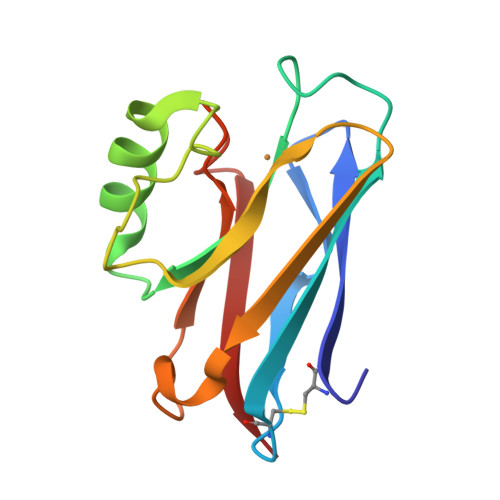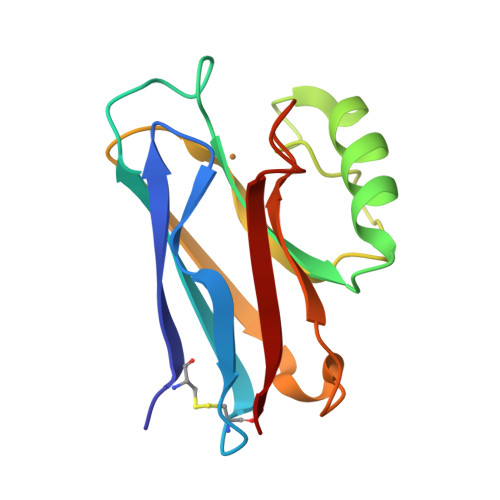Rack-induced metal binding vs. flexibility: Met121His azurin crystal structures at different pH.
Messerschmidt, A., Prade, L., Kroes, S.J., Sanders-Loehr, J., Huber, R., Canters, G.W.(1998) Proc Natl Acad Sci U S A 95: 3443-3448
- PubMed: 9520385
- DOI: https://doi.org/10.1073/pnas.95.7.3443
- Primary Citation of Related Structures:
1A4A, 1A4B, 1A4C - PubMed Abstract:
The rack-induced bonding mechanism of metals to proteins is a useful concept for explaining the generation of metal sites in electron transfer proteins, such as the blue copper proteins, that are designed for rapid electron transfer. The trigonal pyramidal structure imposed by the protein with three strong equatorial ligands (one Cys and two His) provides a favorable geometry for both cuprous and cupric oxidation states. However, the crystal structures of the Met121His mutant of azurin from Alcaligenes denitrificans at pH 6.5 (1.89- and 1.91-A resolutions) and pH 3.5 (2.45-A resolution) show that the preformed metal binding cavity in the protein is more flexible than expected. At high pH (6.5), the Cu site retains the same three equatorial ligands as in the wild-type azurin and adds His121 as a fourth strong ligand, creating a tetrahedral copper site geometry with a green color referred to as 1.5 type. In the low pH (3.5) structure, the protonation of His121 causes a conformational change in residues 117-123, moving His121 away from the copper. The empty coordination site is occupied by an oxygen atom of a nitrate molecule of the buffer solution. This axial ligand is coordinated less strongly, generating a distorted tetrahedral copper geometry with a blue color and spectroscopic properties of a type-1 site. These crystal structures demonstrate that blue copper proteins are flexible enough to permit a range of movement of the Cu atom along the axial direction of the trigonal pyramid.
Organizational Affiliation:
Max-Planck-Institut für Biochemie, D-82152 Martinsried, Germany. messersc@biochem.mpg.de


















